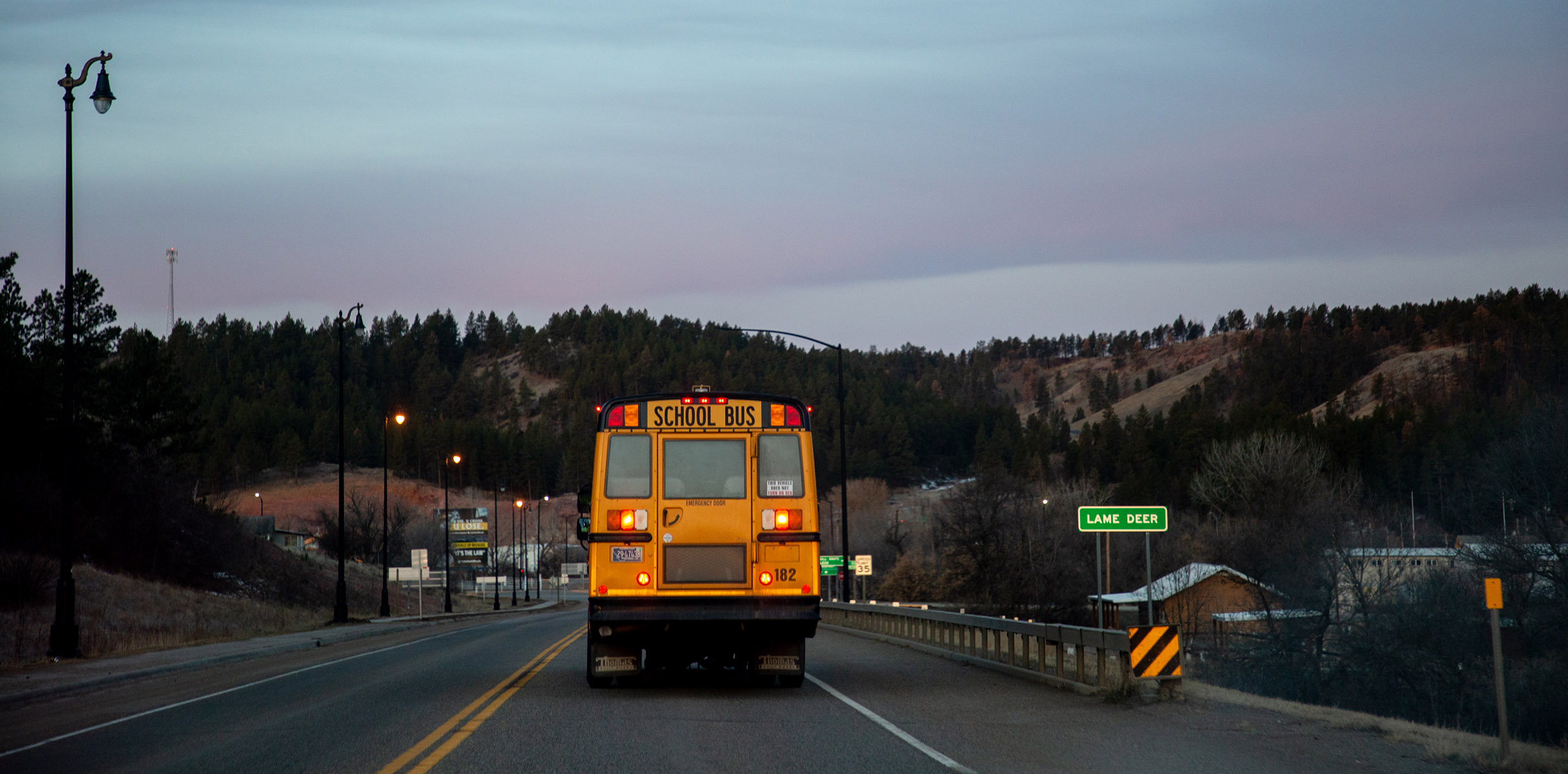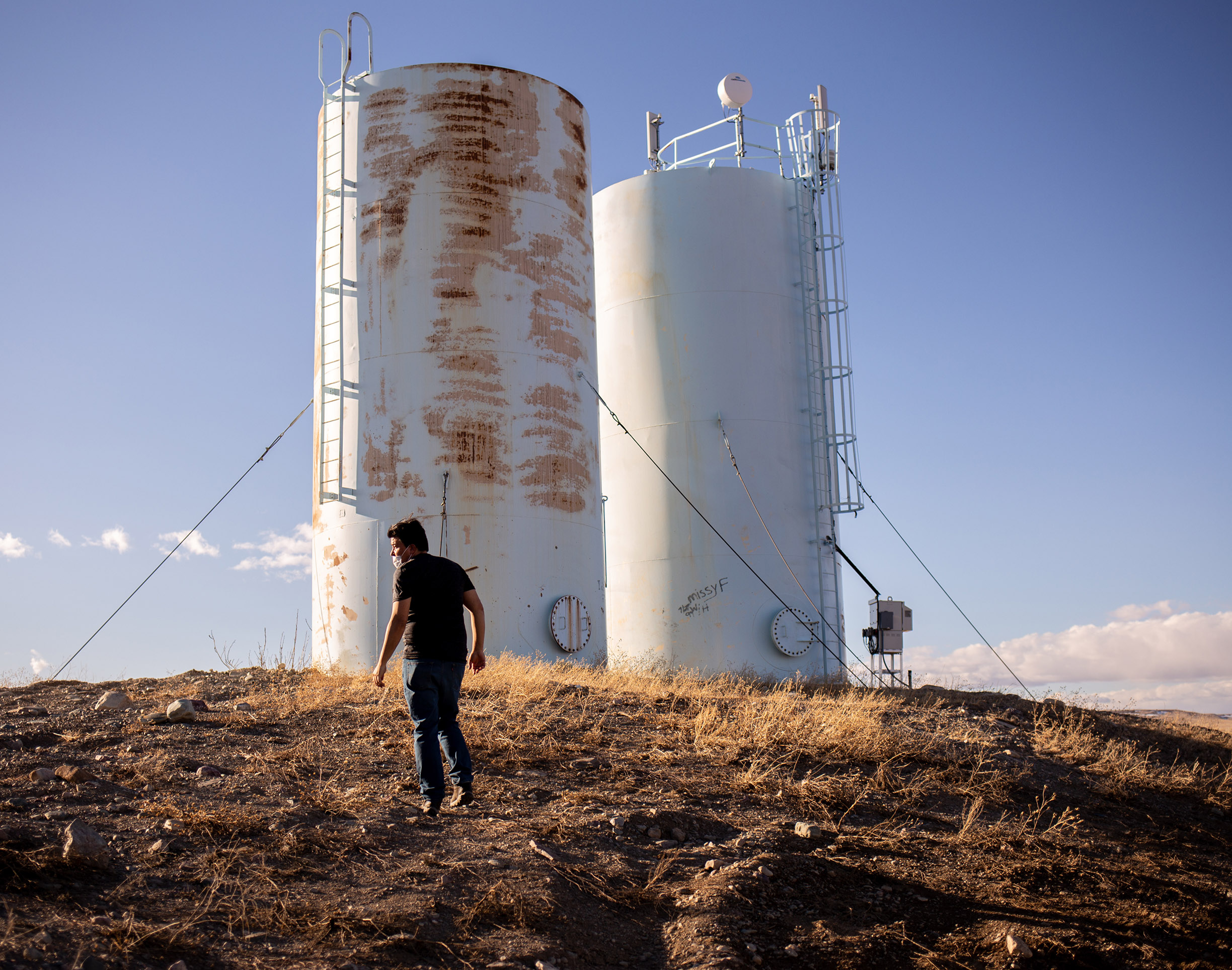
Keeping the Keepers
Defending tribal knowledge by protecting elders
Written by Jordan Unger, Photos by Sierra Cistone
A wooden teepee stands tall, drawing attention in the otherwise vacant Pikuni Walking Park in Browning, Montana. More than a dozen narrow poles coalesce to form the framework of the skeletal structure.
For stability, a strand of rope wraps around the upper meeting point of the stakes and connects to an anchor point on the barren ground below. White ribbons with black cursive scrawling loosely cling to each leg of the structure, juxtaposing the lackluster hues of the wood.
One ribbon reads, “Cynthia Kipp.”
Kipp was 84 when she died from COVID-19 on Nov. 13, 2020. A tribal historian and former Blackfeet tribal business councilwoman, Kipp was also a mother, grandmother and great-grandmother.
Another ribbon reads, “Elizabeth Lee Grant Edwards.”

For Edwards’ niece, Amy Rae Grant, the passing of her aunt, a traditional Blackfeet dancer, felt surreal. “My heart still hurts. I cry about it every day,” she said.
In total, 48 ribbons are stapled to the structure. Each one honors the name of a Blackfeet tribal member lost to the pandemic.
While the impact and loss from the deadly coronavirus across the country cannot be understated, its toll on Indian Country represented more: A direct threat to the preservation of tribes’ way of life.
The virus disproportionately targeted Indigenous and elderly populations. This demographic in tribal communities holds an invaluable status as gatekeepers of language and traditions, helping pass the baton of culture and way of life from one generation to the next.
“I think over 3,589 elders passed away in this last year,” said Larry Curley, the executive director of the National Indian Council on Aging, Inc., a nonprofit focused on addressing the needs of aging American Indians. “That represents over 233,000 years of traditions, customs, language and culture that we have lost. That we will never recover. Never will.”
Nationwide, the loss of culture, language and experience found in elderly populations was taken seriously by tribes and advocates.
For instance, the Cherokee Nation, the largest tribe in the country, prioritized Cherokee language speakers among the highest, right next to emergency workers, in its vaccine rollout.
The Confederated Salish and Kootenai Tribes in Montana similarly prioritized fluent speakers for the vaccine, an ever-pressing concern as there are only 12 fluent Kootenai language speakers and 13 fluent Salish speakers left among a tribal population of over 8,000.
Confronted with a virus that threatened to attack elderly knowledge keepers, Montana’s tribal nations – from Blackfeet to Rocky Boy’s to Flathead – utilized CARES Act funding and grassroots initiatives to protect their people.
Businesses closed. Schools moved online. Government services shut down. On reservations, borders tightened and curfews were imposed.
Across the state, assisted living facilities and nursing homes went into lockdown with residents urged to stay in their rooms.
These protective measures were echoed among tribal communities.
The Blackfeet Nation utilized the $38 million they received from CARES Act funding with a keen interest in keeping their people safe and, after reaching an agreement with the National Park Service, closed the eastern entrance to Glacier National Park for the tourism season.
Inside the Blackfeet Eagle Shield Center, a senior citizen complex in Browning, the building remains eerily quiet. The complex used the nearly $100,000 it received in CARES Act money to upgrade infrastructure in its housing units.
“I was very scared, and we did take caution,” said Zana McDonald, the center’s executive director. “We just absolutely did not let anybody in the building at all. Nobody. Except for us workers.”
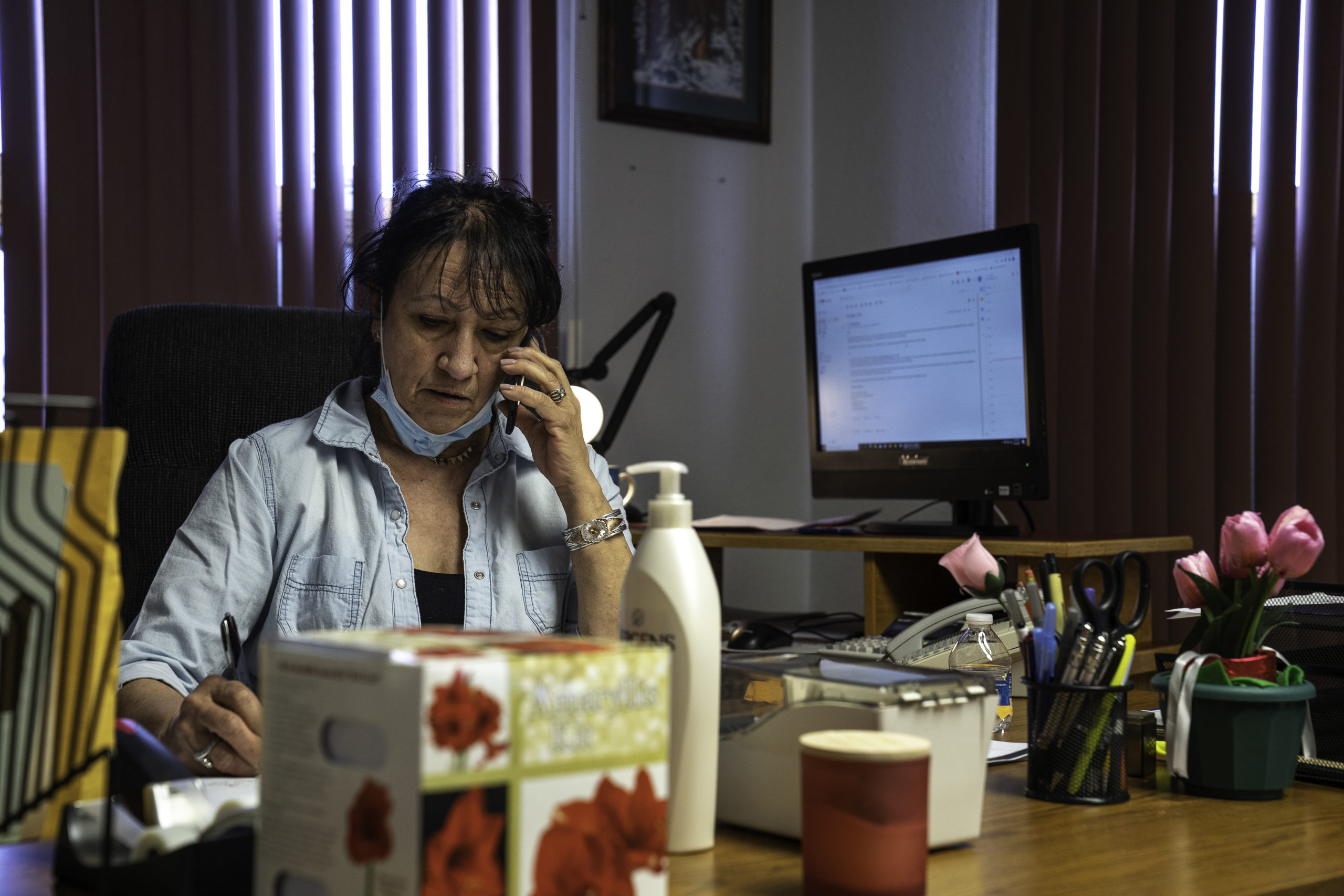
Northwest of Browning, along the St. Mary River, the mountains of Glacier National Park penetrate the skyline of Babb – a small farming and ranching community.
In this remote area of the Blackfeet Nation, Charlene Bird Burns, a ceremonial leader, lives with her husband. They have more than 60 grandchildren and great-grandchildren together.
“We did our best to survive. My husband’s 78, and I’m 71. He has a lot of knowledge that we really have to protect, especially in our area out here,” Burns said. “He’s a historian of this area. And so, the knowledge that he has is really important.”
As Burns recalls, Indigenous people have been through comparable, culture-threatening catastrophes before. Smallpox. Tuberculosis. The Dawes Act, which attempted to push Native Americans to adopt European American culture in the 1880s by criminalizing Indigenous cultural practices.
“We are mentally strong. We’ve been through this,” Burns said. “This history is still in our DNA. All the epidemics are raw in our memory.”
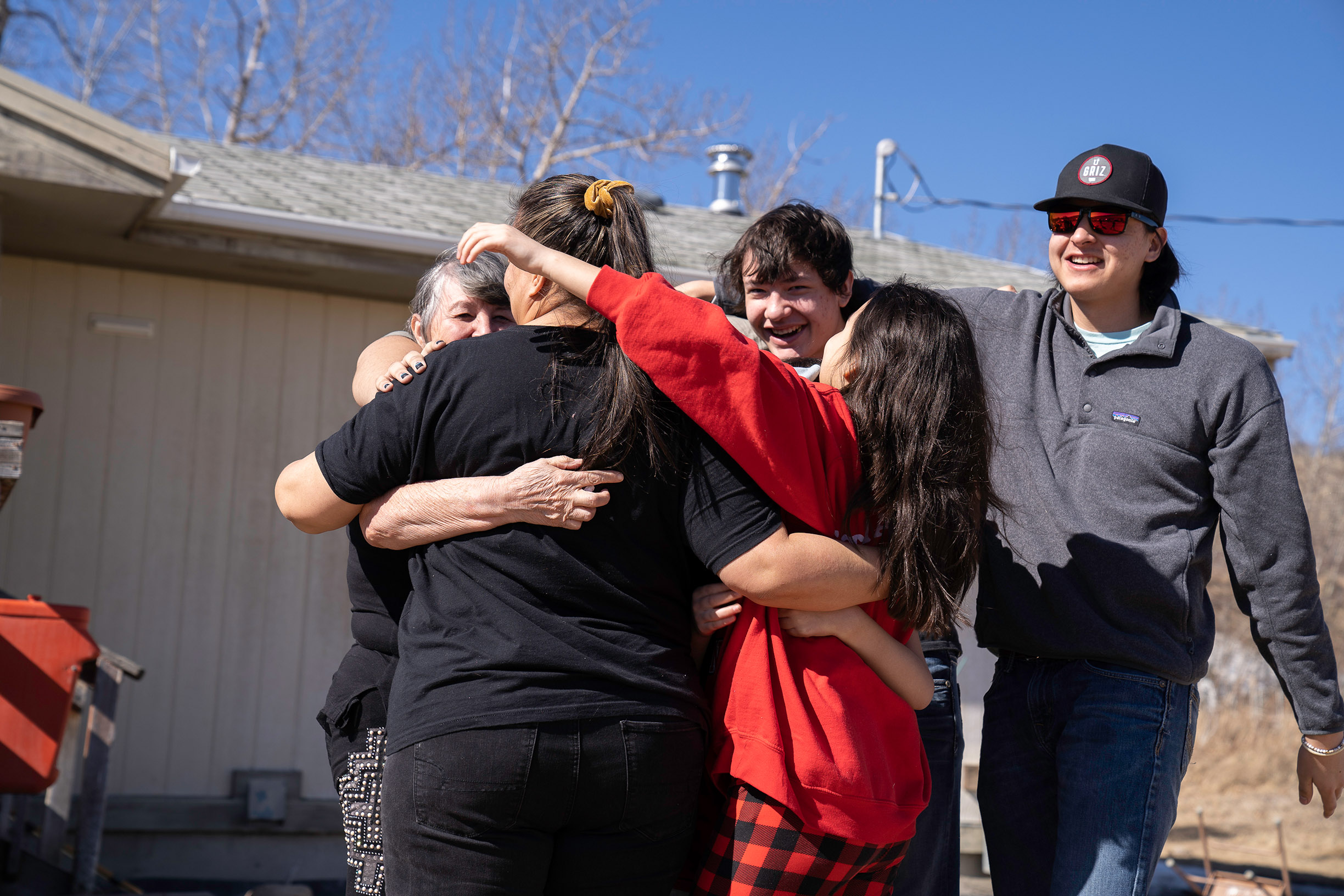
In a twist of incongruity, elders’ vulnerable status often served to push them into further isolation. Yet, for Burns and her husband, it was evident what was necessary to get through the pandemic: simply sit still and wait.
Their home normally functioned as a social hub for the Babb community, a phenomenon put to a screeching halt with the onset of COVID-19. Noteworthy events, like the family’s New Year’s Eve karaoke party and a baby shower, were pushed online.
The tribe, as well as family, stepped up to deliver necessities such as food, household items and medicine.
Yet Burns and her family were not immune from hearing the news of the 48 Blackfeet deaths attributed to COVID-19.
“For us, every one of those losses is personal because we think collectively,” Burns said. “We’ve learned how to survive by helping one another. And in this case, we had to help one another by staying put and not being part of carrying the germ to one another.”
A year defined by the pandemic, overall, translated into a year of strict isolation. But in the face of physical restrictions, the Blackfeet, and other Indigenous communities, found innovative ways to continue sharing their culture throughout the pandemic.
A Blackfeet language class taught over Zoom by a North Piegan Blackfoot member in Canada, Leonard Bastien, boomed in popularity.
“We had like 500 people sign up for it” said Wendy Bremner, one of Burns’ daughters. “Just people from all over the place. Blackfeet live everywhere. And so, a lot of them are tapping into it. We found a way to really connect with each other even though it was during a pandemic, and we’re all isolated.”
For Burns, the language class and pandemic served to highlight how valuable everyone in the community is to one another.
“One elder was teaching us the word how you say, ‘I love you.’ And then how to say, ‘I love you too.’ You know, how to say it back. And she told us [to] use this word daily. This is the one that you need to say daily,” Burns said. “And so, I would say even though it separated us, it brought us closer together as far as how we value one another.”
The first doses of the vaccine arrived onto the Blackfeet Nation toward the end of December 2020, the first sign that the long phase of isolation might slowly recede.
When the vaccine needle plunged into Burns’ arm, it was a moment of instant relief. She compared the significance of the moment to acquiring a shield.
“We believe in our spiritual ways of putting on a shield,” Bremner said. “That’s why we smudge. And a lot of the things we do is like putting a shield over ourselves. And so, they [elders] were equating the immunization to putting on a shield to protect yourself.”
A report from April 2021 released by the Centers for Disease Control and Prevention attributed the Blackfeet Nation’s strict stay-at-home orders and face covering mandates with a 33-fold reduction in coronavirus cases between September and November of 2020, pointing to the effectiveness of the tribe’s mitigation measures.
As of late spring of this year, an estimated 95% of tribal members of the Blackfeet Nation have received the vaccine. The tribe has stepped into Phase 3 of its COVID-19 plan, dubbed “New Normal.”
Normalcy indeed seems to be crawling back after the emotional year.
On a sunny, mid-March Sunday at Burns’ house, family members crowded around a kitchen table while others occupied various seats in the living room. Burns, in the heat of the kitchen, was busy cooking pancakes and bacon for breakfast. A commonplace gathering like this had not happened in about a year.
***
Across the state, on the remote plains of north-central Montana, the
Chippewa Cree Tribe on the Rocky Boy’s Indian Reservation enacted similar safety precautions to protect the elderly.
The Chippewa Cree Tribal Business Committee declared a state of emergency due to the outbreak of the novel coronavirus on March 16, 2020. Days later, Rocky Boy’s became the first community in Montana to place checkpoints at the entries to its borders.
The emergency declaration, however, was the second issued within a year’s time.
In August 2019, months before COVID-19 emerged, the business committee had declared a different state of emergency addressing the loss of the Chippewa and Cree languages.
To protect those at risk in their community, the tribe utilized over $20 million they were allocated through the CARES Act to combat the pandemic and its life-altering reverberations.
A public safety enforcement program utilized $2.24 million to address COVID-related public safety challenges and hired extra security personnel to maintain borders and enforce the stay-at-home mandate.
With $163,000, the tribe offered extra firewood to elderly tribal members to provide a lifeline during northcentral Montana’s harsh winters.
The tribe also used $179,000 to help ensure low-income seniors and those on Medicare received care through a senior citizens health and safety program.
Due to their remote location, another $112,000 was directed to install an emergency fuel station in an attempt to limit travel outside the tribal territory.
Yet, like mold proliferating in a concealed container, the microscopic virus permeated the tight safety measures, targeting those holding onto already threatened languages and traditions.
At his Rocky Boy’s residence on Aug. 5, 2020, Merle Tendoy, 63, passed away.
A respected elder and cultural advisor, Tendoy also held an important role as powwow emcee.
Robert Murie, one of Tendoy’s brothers and a language instructor at Stone Child College, recalls his brother’s good heart and knowledge as among his most prominent attributes.
“He really had a lot of good, wonderful stories about the creation story,” Murie said. “He was gifted that way.” Tendoy was well respected for his knowledge and because he lived his life around ceremonial teachings, Murie said. “He walked that road of life.”
It is Tendoy’s voice, though, that Murie particularly remembers when thinking of his brother.
“He knew a lot of cultural songs, beautiful songs. Never did I see him mad, screaming out of anger. I never did,” Murie said. “The only time I heard him using a voice kind of loud was his singing. He had a beautiful voice.”
Dustin Whitford, the executive director of the Mahchiwminahnahtik Chippewa and Cree Language Revitalization nonprofit on Rocky Boy’s, believes Tendoy was the first COVID-19 fatality to hit the Chippewa Cree tribe.
“It was a major loss because of his knowledge that he had about traditions, customs, ceremonies and the language,” Whitford said. “His presence is really missed.”
Tendoy was one of less than 100 fluent Cree speakers remaining, according to Whitford.
At the end of February 2021, tragedy would strike again on Rocky Boy’s with the passing of Duncan Standing Rock Sr., an elder who worked with the Chippewa Cree Tribal Cultural Preservation Department.
Standing Rock Sr. was one of only an estimated two or three fluent Chippewa speakers left.
For Clyde Brown, the language revitalization center’s treasurer, these two emergencies coalescing have been nothing short of an existential threat.
“I knew numbers [of fluent speakers] were low, throw in COVID and it kind of sped everything up,” Brown said. “So, not only were we in a state of emergency before COVID, now we’re really in a state of emergency, not only health wise. Right now, I think we’re just kind of trying to figure out how we can survive all this.”
***
Home of the Confederated Salish and Kootenai Tribes, the Flathead Indian Reservation occupies a checkerboard territory of tribal and non-tribal people interspersed predominantly in Lake County.
The tribes fought to protect their people, but the area was not immune to the lethal virus. As of April 14, 2021, there have been 2,125 reported COVID-19 cases in Lake County, 42% of which were tribally affiliated.
Alan “Chauncey” Beaverhead, 59, who passed away in late 2020, was among a shrinking demographic of fluent speakers on the Flathead reservation.
For Mary Jane Charlo and Myrna Dumontier, prominent tribal elders, the significance of losing Beaverhead during the pandemic is difficult to overstate.
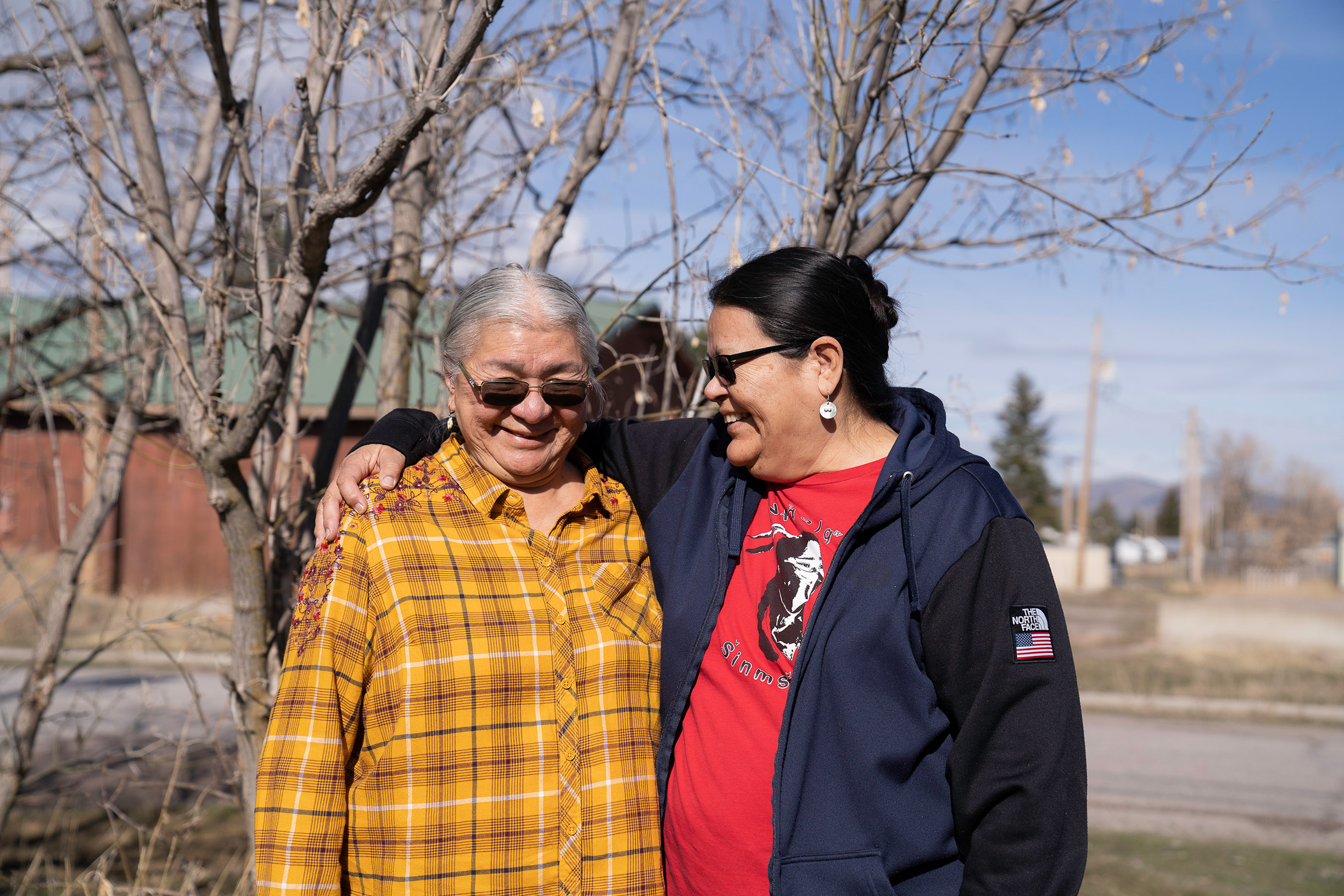
“The equivalent is a library burning down,” Dumontier said. “Chauncey was a very quiet man. But if you really wanted the heart of an answer to a cultural question, he knew it. He was one of two people that we had left like that.”
To protect their most at-risk demographic, the tribes provided meat, medicine and other essentials for the elderly as they remained isolated at home.
“It was a rough, rough year,” said Charlo, who spent a large portion of her time during the pandemic doing beadwork.
Elders were identified and given signs to place on their front door as a means to notify others not to enter.
However, according to Dumontier, fear plagued many tribal members.
“At first it felt like paralysis. We were all scared to do anything,” she said. “Our kids were saying you can’t come, and my grandkids are saying we can’t come over. That hit me. That was hard.”
With more than $44 million in CARES Act assistance, the tribes directed nearly $1 million to a multimedia communications campaign, “Who’s at Risk,” to raise awareness about protecting the tribes’ vulnerable elderly population.
The campaign used billboards, videos and radio messages stressing the importance of COVID-19 safety precautions.
Shadow Deveraux, a hip-hop artist, was commissioned to make a song and music video to highlight the importance of protecting elders.
“I named the song ‘Protect Your People.’ It was just about protecting our elders and making sure the youth take it seriously,” Deveraux said. “It was super important to me after I started writing it.”
For many tribal elders, one of the most difficult aspects has been the ongoing disruption of community events — the Bitterroot Feast, powwows, the river honoring, language camps, family get-togethers. Ceremonial gatherings, in general, have been scarce.
“We’re hungry for those times, Dumontier said. “We’re hungry to gather and be together.”
Stephen Small Salmon, 81, and his wife, Juanita, have felt similarly isolated and disconnected over the past year.

“It’s been a long, hard year for me. Part of it was a little bit of fear and being so isolated,” Juanita Small Salmon said. “Tribal people are so used to getting together and celebrating. The dancing and the drums and the singing, it keeps them going. I have never felt quite right since we didn’t have the Arlee Powwow.”
After helping found the Nkwusm Salish Immersion School in Arlee nearly two decades ago, Stephen Small Salmon, a fluent Salish speaker, has fought to keep the language and traditions alive. Waiting out the pandemic, Small Salmon is often reminded of the elders that preceded him.
“They used to say something is going to come through because we’re not taking care of this world,” he said.
Most evenings, with this in mind, Small Salmon finds himself sitting on his porch, taking in the beauty of his natural surroundings and reflecting on the state of the pandemic. When completely clear of the coronavirus’ shadow, there is one thing in particular he looks forward to.
“Life,” he said. “For the elders, you know, we have to enjoy the rest of our lives.”
